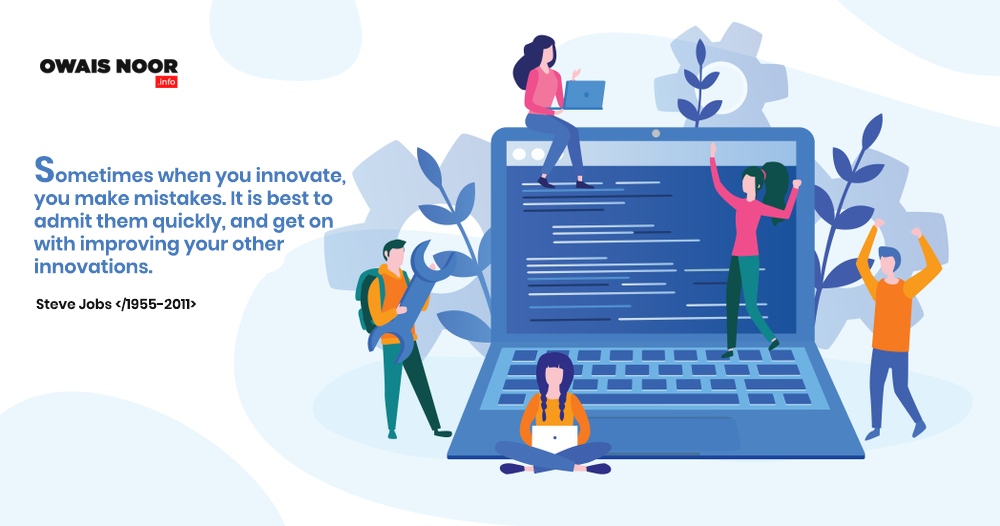As far back as the introduction of the World Wide Web in 1990, the domain of web development has advanced progressively from web pages to web applications. End users no longer browse web pages for reading static content. Websites currently have dynamic features to build their engagement rate. Interactive websites are being grown so users can play out their everyday exercises like looking for food supplies, banking, paying taxes, etc. However, these applications are developed by human beings, and, since we’re all human, mistakes happen. Often a simple mistake can impact a critical functionality in your website that will lead the user to go to a different website, reducing your profit and SERP ranking. In this article, we shall discuss the common mistakes made by developers while developing a web application.
Using Non-Responsive Design
These days, not keeping RWD (Responsive Web Design) as a top priority will result in an enormous site showed in a little screen with little catches making it hard for the end user read the content or click on the horizontal scrollbar along with many other discrepancies, all of which will prompt a bad user experience.
Ignoring Web Standards & Using Outdated HTML
Web standards are there to unify code and that helps to create device independent apps. Sometimes the web developer makes the mistake of using inappropriate DOCTYPES which includes transitional DOCTYPES using HTML that doesn’t apply anymore like canter elements not validating code or ignoring the results. It is always needed to pay attention to web standards and work around them to avoid mistakes and create a clean and error free-code and it is rightly said that old habits are difficult to get rid of.
Web developers who started coding in the earlier days of HTML may still have the habit of using lots or spans and ‘&nbps’s which not only increases the line of code but also causes layout issues in updated browsers like Microsoft Edge, Google Chrome and Firefox.
Ignoring Cross-Browser Compatibilities
Those days are a distant memory when the Internet Explorer was the main program accessible to get to sites. At present, aside from the hotshots like Chrome, Firefox, Safari, there are many desktop and mobile browsers, even some device-specific browsers that are favored by users for accessing websites.
Use analytic tools and target browsers on which your site is intended to run appropriately. Complete appropriate testing and see whether any usability or functional issue is happening in any such browser. Find any CSS or HTML issues that are causing breakage in a particular browser and fix the issues by supplanting them or including vendor-specific codes.
Ignoring Technical SEO
When it comes to SEO, developers tend to work towards the quality of content, tags, keywords, meta-data, site map, etc and feel contented. However, SEO is much more than this. It includes eliminating duplicate content, having crawlable site architecture, intelligent backlinking and a lot more. Some web developers have thoughts that SEO is something best left to the marketers or content developers. While SEO is something that must be embraced from the beginning for it to be effective. SEO is not just about content or backlinks.
Authentication Without Proper Authorization
Authentication: Verifying that a person is (or at least appears to be) a specific user since he/she has correctly provided their security credentials (password, answers to security questions, fingerprint scan, etc.).
Authorization: Confirming that a particular user has access to a specific resource or is granted permission to perform a particular action.
Stated another way, authentication is knowing who an entity is, while authorization is knowing what a given entity can do. You need to make sure that you verify actual requestor and content of request within your @controller method and implement proper Authorization of the request
Authentication and Authorization are two sides of the same coin. Never treat them separately.
Not Optimizing Bandwidth Usage
Most development and testing take place in a local network environment. So when you are downloading 5 background images each being 3MB or more, you might not identify an issue with 1Gbit connection speed in your development environment. But when your users start loading a 15MB home page over 3G or 4G connections on their smartphones, you should prepare yourself for a list of complaints and problems.
Optimizing your bandwidth usage could give you a great performance boost, and gain this boost you probably only need a couple of tricks. There are few things that many good web developers do by default, including:
- Minification of all JavaScript
- Minification of all CSS
- Server-side HTTP compression
- Optimization of image size and resolution
Incomplete Input Validation
Validating user input on client and server side is simply a must do! We are all aware of the sage advice “do not trust user input” but, nevertheless, mistakes stemming from validation happen all too often. Remember that most front-end development frameworks provide out-of-the-box validation rules that are incredibly simple to use. Additionally, most major back-end development platforms use simple annotations to assure that submitted data are adhering to expected rules. Implementing validation might be time-consuming, but it should be part of your standard coding practice and never set aside.
Dealing With Broken & Poorly Optimized Pages
There’s nothing worse than clicking a link and seeing “Page Not Found,” especially when it comes to a product or landing page. In other cases, the page may still exist but not display properly due to a site conflict or a broken plugin. Some websites also lose potential conversions by neglecting their product descriptions and failing to provide enough information. Any of these mistakes can have a huge impact on a business’s bottom line.
The only way to avoid these issues is to actively have eyes on your website—whether it’s a developer, a QA specialist, or through direct feedback from customers. There are tools that can assist in locating and solving some of these issues, but it still requires a hands-on approach with a system in place for diligent bug reporting and eliminating problems
Autoplaying Videos With Sound
If you have a video embedded on your website then turn autoplay off. Or at the very least, remove the sound.
While you might think that blaring sound out at people as soon as they load your page is a good way to get attention, it’s actually a much better way to get your site closed immediately.
Most people browse multiple sites at once and when they hear the noise, they’ll just look for the one with the sound icon next to it and hit ‘close’.
A lot of people also like listening to their own music while they browse, so they won’t hear your video properly anyway, and it will just come out as a garbled mess
Opening New Windows
Once upon a time, using multiple new frames to display content as a user clicked through a site was cool–a new thing in web design. Now it only annoys viewers because it ties up system resources, slows computer response and generally complicates a visitor’s experience. Sure, it’s easy to use this tool. But don’t. With tabbed browsing common in browsers like Firefox, users who wish to open links in new tabs can do so if they wish.
Making Core Information Hard To Find
Frankly, there is no point in designing a “hi-tech” website if your readers cannot find the core information easily. You build a website for your brand so that your potential customers/clients or for that matter any user, learns more about your brand. One common mistake is that there are many websites who forget to link important information from the homepage to its actual page. Avoid this mistake as it will lead to your loss. Link your information correctly and easy enough for the users to find.




